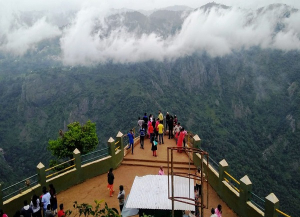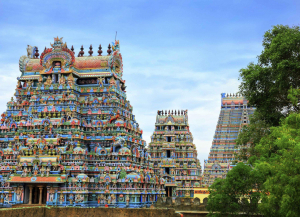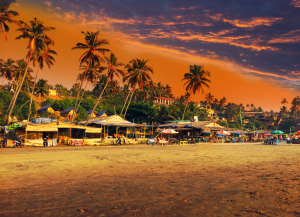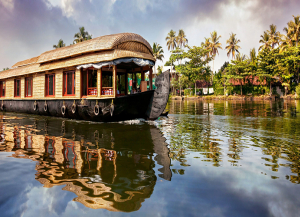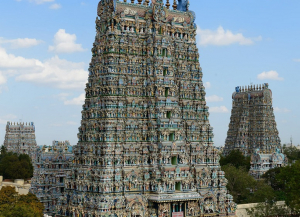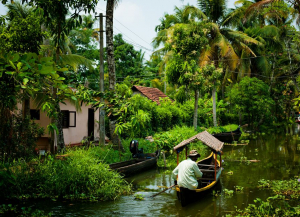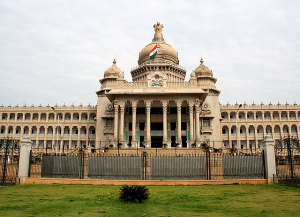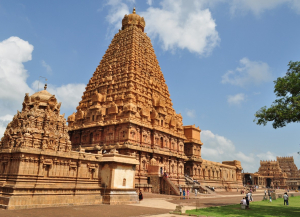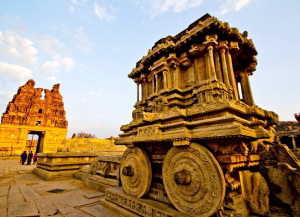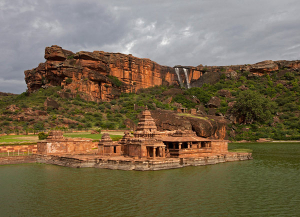South India Tours
South India in consisting of the states Andhra Pradesh, Tamil Nadu, Karnataka, Kerala, and Telangana and the Union Territories of Andaman and Nicobar, Lakshadweep, and Puducherry. In total, South India occupies around 635,780 sq km, which amounts to 19.31% of India’s area. South India is bounded by the Arabian Sea in the West, Indian Ocean in the South, and Bay of Bengal in the East while covering the Southern part of the Deccan Plateau.
If want to spend a unique vacation among tranquil hill stations, mesmerizing waterfalls, majestic temples, historical monuments, exotic beaches, luxuriant vegetation and much more. Due to its abundant beauty, South India is an important tourist destination. Amidst the mountain ranges of Western and Eastern Ghats, South India is blessed with the mighty rivers Godavari, Krishna, Kaveri, Tungabhadra and Vaigai rivers.
The history of South Indian states is as old as 5000 years. Its history can be divided into three important dynasties- Pandyan, Chola, and Chera. Pandyan dynasty was the richest empire popular for their diplomacy and contacts. They expanded their Empire to Telegu country, Kalinga and conquered Sri Lanka as well. Chola dynasty ruled from 9th century to the beginning of 13th century.
...The Chera dynasty also had an important mark and presence in the region. The region also faced prominent British rule. The East India Company had direct control over Madras Presidency. During Independence, Hyderabad witnessed wide massacre of Muslim population by Hindus. It was in 1950s when British delineated provinces and princely states were pulled apart and South India was reorganized based on linguistic lines.
South India is home to the largest bio-diversity in India and is the largest producer of spices. The region consists of 9 UNESCO World Heritage Sites. The intricate artwork of South India temples is a reflection of its rich history, culture and tradition, which is nowhere else to be found. Sree Ananthapadmanabha Swamy Temple is the richest temple in the world. It has highest literacy rate as compared to the rest of the Nation.
All the South Indian states are rich in culture and heritage. The traditional female wear is Saree while men wear Dhoti. Rice is the staple diet and fish is an integral component. Coastal areas consume seafood in large numbers. Dosa, Idli, Uttapam are popular dishes. Their folk music is Carnatic music. Koodiyattam, Bharatanatyam, Oppana, Kerala Natanam, Theyyam, Kuchipudi, Kathakali, Yakshagana Ottamthullal, and Mohiniaattam are popular dance forms. There is a majority of Hindu, Muslim, and Christian people.
The best time to visit South India is in winter from December to February. Travelogy India is providing customized South India Tour Packages to explore hill stations, backwaters, beaches, and many more. Some of the beautiful hill stations are Coorg and Ooty. Then there is Andaman- the paradise of islands, which offers great opportunity for indulging in water activities. Andaman is also home to many pilgrimage and religious sites. One can head to the Periyar National Park to have a view of wildlife. Kerala is a must visit to experience the backwaters in Alleppey. Hampi and Mahabalipuram offer great destinations for exploring architectural beauties. Pondicherry is a must visit for witnessing the French architecture.
14 Itinerary Found
6 Days - South India Hill Stations Tour
Bangalore - Mysore - Ooty - Coonoor - Coimbatore
Trip Highlights- Well-planned parks, gardens and Bull Temple, Bangalore
- Srirangapattana Fort and Krishnarajasagar Dam in Mysore
- Dancing musical fountain at Brindavan Gardens, Mysore
- Mysore Palace and Zoo in Mysore
- Wildlife at Bandipur and Mudumalai Wildlife Sanctuary
10 Days - South India Temple Tour from Mumbai
Mumbai - Chennai - Kanchipuram - Mahabalipuram - Pondicherry - Chidambaram - Tanjore - Trichy - Madurai
Trip Highlights- Gateway of India, Crawford Market, Hanging Gardens - Mumbai
- Parthasarathy Temple, Kapaleeshwarar Temple and Marina Beach, Chennai
- Ekambareshwrar temple, Kamakshi Amman Temple in Kanchipuram
- Shop Hand Woven Silk Sarees, Kanchipuram
10 Days - South India Tour with Goa
Chennai - Kanchipuram - Madurai - Periyar - Kumarakom - Cochin - Goa
Trip Highlights- Kapaleeshwarar Temple, St. Thomas Church and Marina Beach, Chennai
- Ekambareshwarar Temple, Kamakshi Temple in Kanchipuram
- Sightseeing at Shore Temple and Five Rathas Temple, Mahabalipuram
- Attend the Aarti Ceremony at Meenakshi Temple
- Wildlife sanctuary and boating into Periyar
10 Days - Hills and Backwaters of Kerala Tour
Cochin - Alleppey - Periyar – Munnar - Athirapally – Guruvayur - Cochin
Trip Highlights- Cruise through the Canals of Kumarakom
- Exotic Wildlife in Periyar National Park
- See the Mattupetty Dam
- Experience Wildlife Eravikulam National Park in Munnar
- Enjoy Athirapally Waterfalls
10 Days - South India Tour
Chennai - Kanchipuram - Mahabalipuram - Tanjore - Trichy - Madurai - Munnar - Periyar - Alleppey - Cochin
Trip Highlights- Basilica of San Thome, Lighthouse and Marina Beach - Chennai
- Krishna Mandapam, Shore Temple, Sakkiswarar Temple at Mahabalipuram
- Kailasanathar Temple and Ekambaranathar at Kanchipuram
- Chola Temple and Brihadeeswarar Temple at Tanjore
11 Days - Tamilnadu and Kerala Tour
Chennai - Mahabalipuram - Kanchipuram - Tanjore - Madurai - Periyar - Kumarakom - Alleppey - Cochin
Trip Highlights- Basilica of San Thome, Lighthouse and Marina Beach - Chennai
- Krishna Mandapam, Shore Temple, Sakkiswarar Temple at Mahabalipuram
- Kailasanathar Temple and Ekambaranathar at Kanchipuram
- Chola Temple and Brihadeeswarar Temple at Tanjore
- Meenakshi Amman Temple and Tirumalai Palace at Madurai
11 Days - Karnataka and Kerala Tour
Bangalore - Mysore - Ooty - Cochin - Alleppey - Kumarakom - Kovalam - Trivandrum
Trip Highlights- Tipu Sultan's Palace, ISKCON Temple, Lal Bagh Garden in Bangalore
- Maharaja Palace, Brindavan Gardens and Chamundi Hills
- Bandipur and Mudumalai Wildlife Sanctuaries enroute to Ooty
- Enjoy Kathakali Dance at Cochin
- Fort, Chinese fishing net and St. Francis Church at Cochin
12 Days - South India Temple Tour
Chennai - Tirupati - Kanchipuram - Mahabalipuram - Pondicherry - Chidambaram - Tanjore - Madurai - Rameshwaram - Kanyakumari - Kovalam - Trivandrum
Trip Highlights- Parthasarathy Temple, Marina Beach, Kapaleeshwarar Temple in Chennai
- Varadharaja Perumal Temple, Kamakshi Amman Temple at Kanchipuram
- Auroville township, French war memorial, Promenade Beach, Pondicherry
12 Days - Mumbai, Karnataka and Kerala
Mumbai - Bangalore - Mysore - Ooty - Munnar - Alleppey – Cochin
Trip Highlights- Visit Gateway of India, Siddhivinayak Temple at Mumbai
- Explore Bull Temple, Cubbon Park and Kempegowda Fort at Bangalore
- Visit Mysore Palace, Lalitha Mahal Palace and Mysore Zoo
- Enjoy Romantic Boat Ride at Ooty Lake
- Walk the tea gardens and Tea Museum at Munnar
- Enjoy the houseboat, villagers lifestyle in Alleppey
- Explore famous Jew town, Mattancherry Palace at Cochin
15 Days - South + West India Trip
Mumbai - Bangalore - Mysore - Hassan - Hospet - Hampi - Badami - Hubli - Goa
Trip Highlights- Gateway to India, Hanging Gardens and Elephanta Caves at Mumbai
- Vidhan Soudha, Nandi Temple and Iskcon Temple, Bangalore
- Brindavan Gardens and Mysore Palace
- See attraction of Shravanbelagola
- Visit Chennakesava Temple at Hassan


